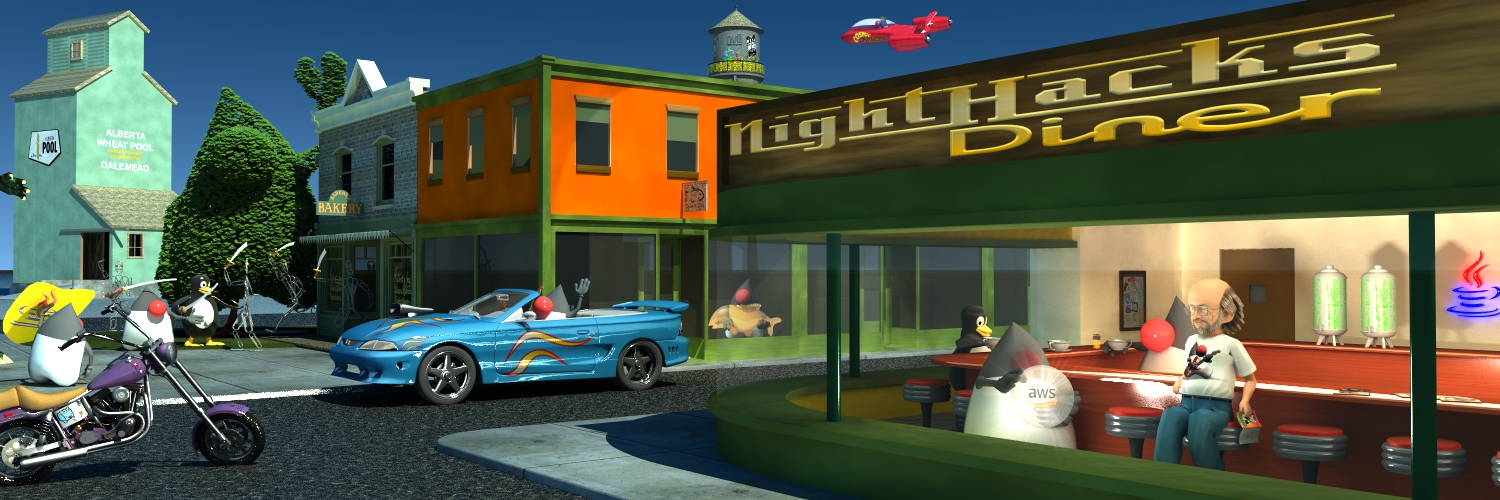Cell phones in Japan
One of the things that's always interesting about visiting Japan is looking at all of their cell phones. I've seen some great things here on this visit.One was a very cool phone that flips open on the long side, something like a Nintendo DS - and in a piece of cool mechanical engineering, it can flip open on the orthogonal edge, just like a conventional flip phone. It has a lovely hardware implementation of OpenGL/ES and does truly impressive 3D graphics. Fluid frame rates, great modeling and texturing, ... a great handheld game machine. The games I played were great - and Java! Distributed multiplayer gaming - challenge your friend to a road race while you're both commuting on the train - and on different trains.
One of the games was a bowling game that you play roughly the same way that you'd use a Nintendo WII: you hold the phone as though it's a bowling ball, and you go through the motions of throwing the ball. You use a button press to release the ball. When this happens, it does the physics. But the phone doesn't have accelerometers to measure how you move the phone. They used one of the most glorious hacks I've seen in years: images are captured by the camera as you swing it in your hand, which are then analysed and correlated and motion vectors are computed from the interframe deltas.
The most impressive thing I've seen is the use of cell phones for money. I see people all over Tokyo paying for everything from groceries in minimarts to airplane tickets by holding their phones up to cash registers. This is done by having a proximity stored-value smart-card chip embedded in the skin of the phone. These cryptographically secure chips can do transactions with point-of-sale terminals instantaneously, no matter how slow the network is, or even if it is down. It is very much like the stored-value smart-cards that have been used around the world for years. But having them embedded in the skin of a cell phone has some great advantages, stemming from the Java APIs that allow direct communication between the stored-value chip and the phone. This allows a variety of banking and commerce applications to be built. For example, to put more money into the stored-value chip, you don't have to go to a bank kiosk, you can do it directly over the network from the phone. You can also do Quicken-style check-writing and budgeting - directly from the phone. All Java apps. As a bonus, if you lose your phone (or it gets stolen) you can call up the phone company and (after a few security questions) they can lock the phone remotely and use the network's location-awareness capabilities to tell you roughly where the phone is. (Privacy freaks: explode now...).
Plus... You can use your cell phone to book airplane (and train) tickets, and use the cell phone itself as both the ticket and the boarding pass. Zero paper. To check in, you just swipe your phone on a reader as you're dashing to your seat. Very fast and secure.
[Update in response to flavin's comment about the design of JavaME: In fact, the situation is quite the opposite: the evolution of JavaME is heavily driven by the capabilities of international carriers and phone manufacturers. It's a huge frustration to American JavaME developers that they can read about all of these cool APIs (like OpenGL/ES), but the available systems don't support them]
| November 7, 2007 |
